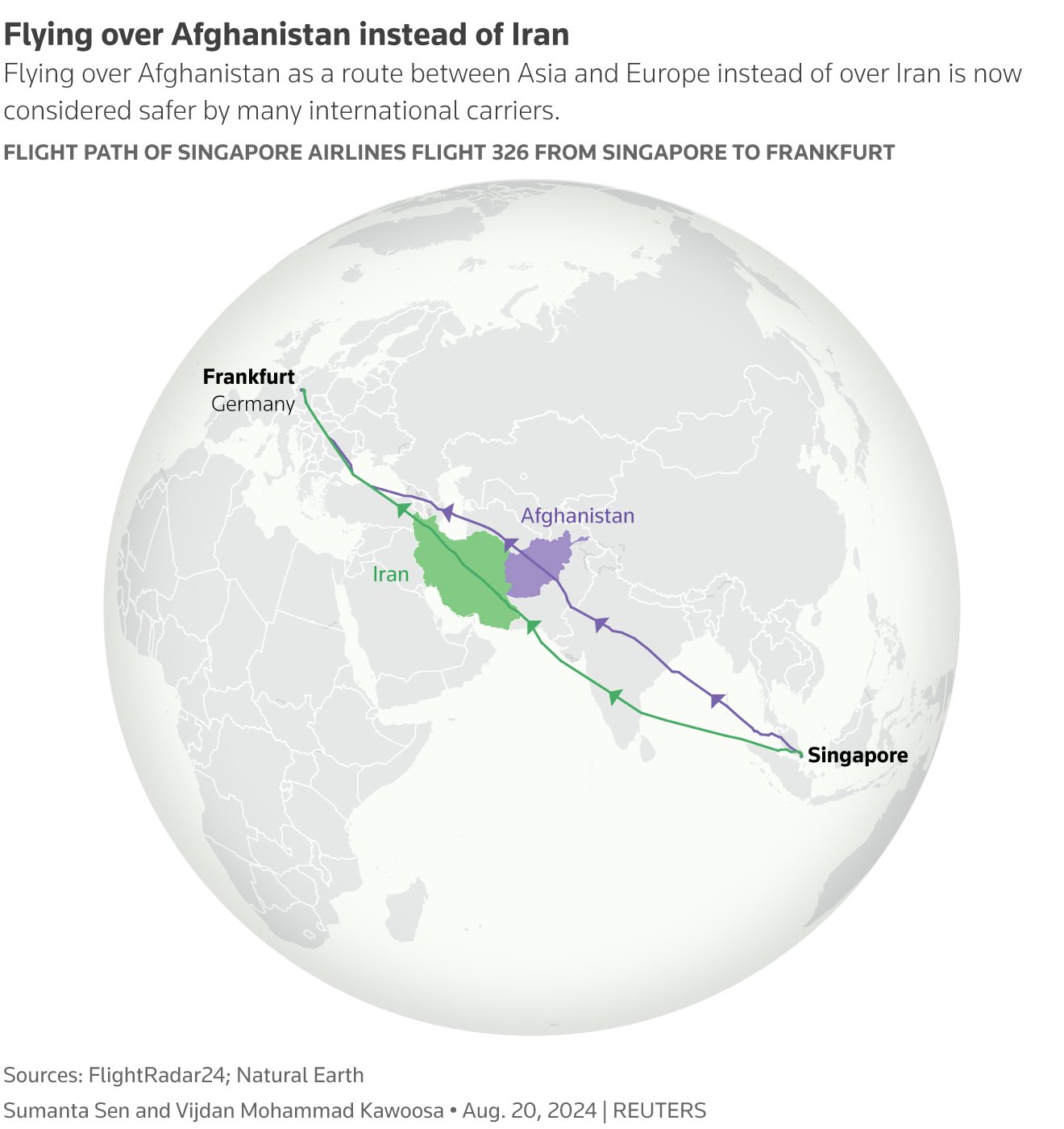Several major airlines, including Singapore Airlines, British Airways, and Lufthansa, have significantly increased their flights over Afghanistan, deeming it a safer route amid the escalating conflict between Iran and Israel. These airlines had largely avoided Afghan airspace for the past three years following the Taliban’s takeover and the subsequent halt of air traffic control services. However, as the Middle East becomes increasingly volatile, airlines are now reassessing the risks and choosing to transit over Afghanistan.
The change in flight patterns began in mid-April when tensions between Iran and Israel escalated, leading to reciprocal missile and drone attacks. Data shows that Lufthansa, Singapore Airlines, British Airways, and other carriers started to route a few flights daily over Afghanistan during this period. The trend accelerated following the killing of senior members of militant groups Hamas and Hezbollah in late July, which raised concerns about a broader regional conflict.
Despite the increase in overflights, there are ongoing safety concerns among pilots. Without active air traffic control in Afghanistan, pilots rely on a communication protocol established by the U.N. aviation body ICAO and Afghanistan’s Civil Aviation Authority. This method involves pilots talking to nearby planes over radio frequencies as they transit the region.
European aviation safety regulators have also expressed caution. The European Aviation Safety Agency (EASA) reissued a conflict-zone information bulletin in July, warning that extremist groups in the region remain active and could sporadically target aviation facilities.
The shift towards using Afghan airspace has been facilitated by recent changes in aviation regulations. The U.S. Federal Aviation Administration (FAA) eased its guidance on Afghanistan in early July, allowing planes to fly at a lower altitude over the Wakhan Corridor, a narrow strip of northeastern Afghanistan. This change opened the route to more types of flights, although the FAA still requires planes to stay above 32,000 feet over the rest of the country, where surface-to-air threats are less effective.
Airlines are also under pressure to find cost-effective routes due to the loss of access to Russian airspace since 2022, which has forced many carriers to seek alternative paths to Asia. Flying over central Afghanistan offers a more direct route from Europe to southern Asia, saving time and fuel, which is crucial for airlines as they continue to recover from the pandemic.
While the increase in traffic over Afghanistan has not resulted in any incidents so far, safety remains a concern, especially in the absence of formal air traffic control. The industry continues to grapple with the risks of flying over conflict zones, haunted by the memory of Malaysian Airlines Flight MH17, which was shot down over Ukraine in 2014. As airlines navigate these complex decisions, the balance between safety, cost, and efficiency remains at the forefront of operational planning.
READ MORE:
